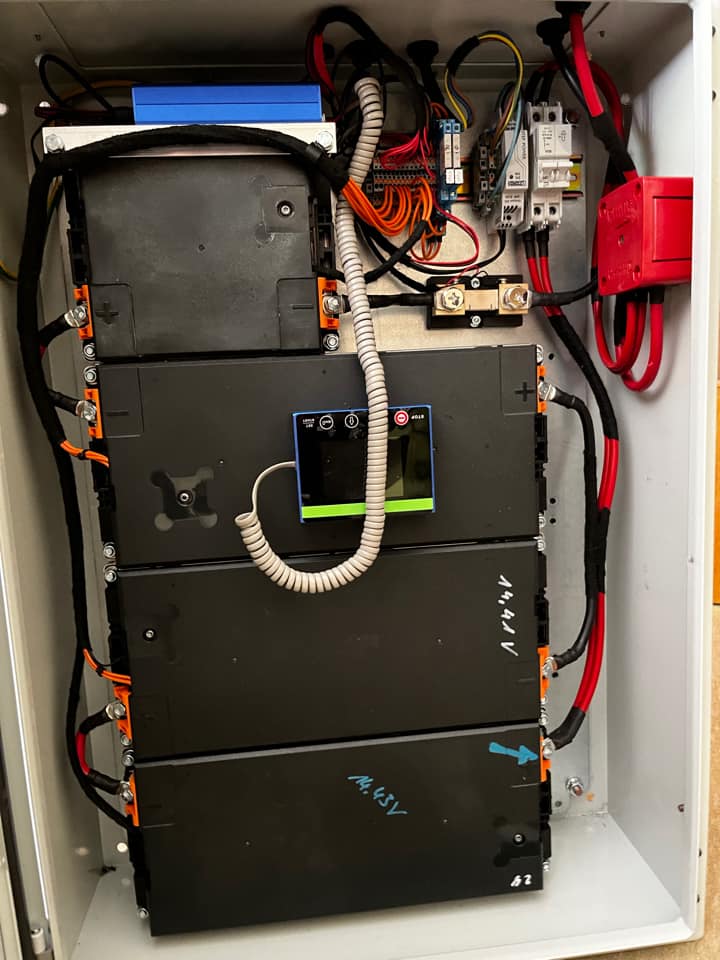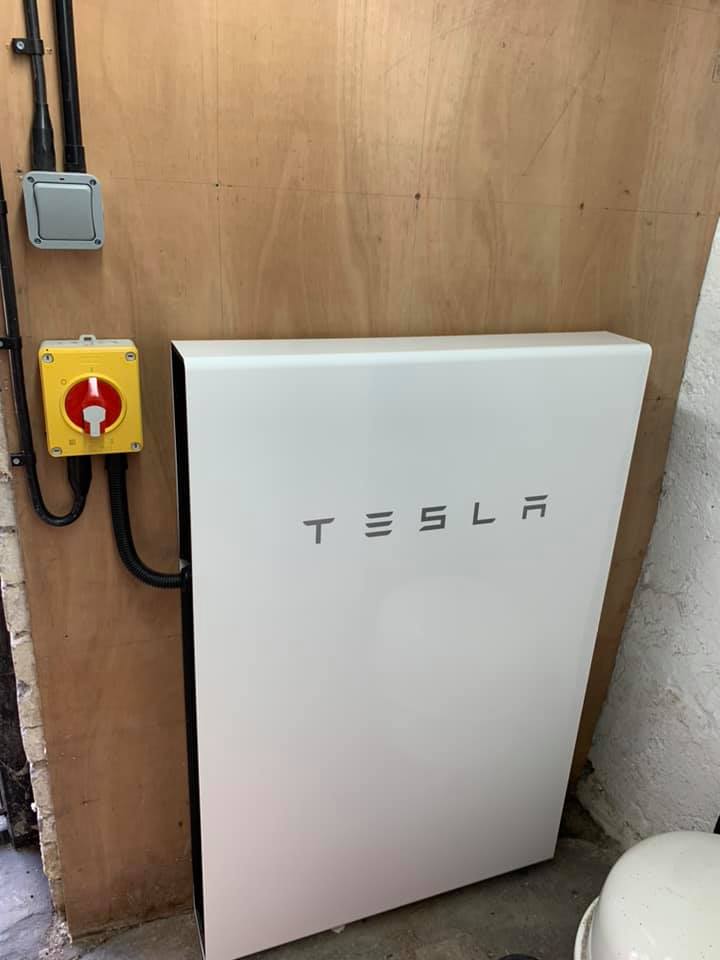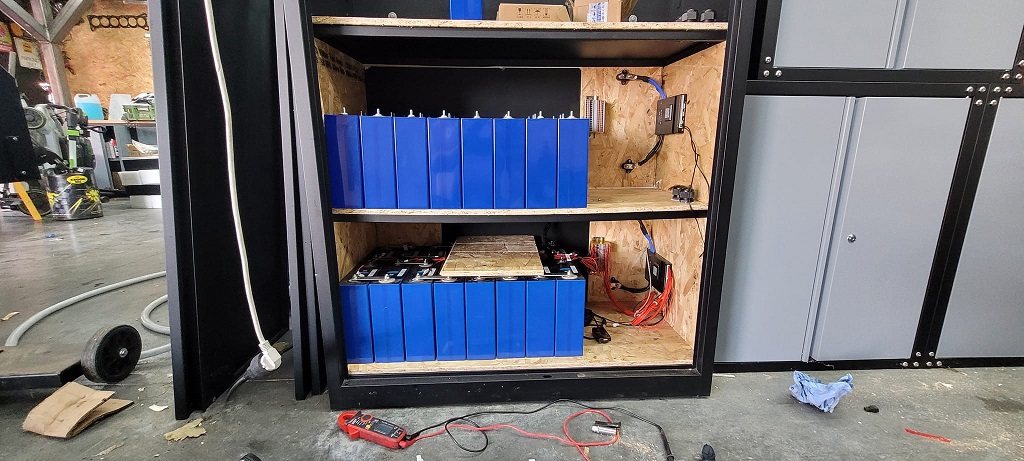
DIY Powerwall Vs Buying A Prebuilt Powerwall
Table of Contents
What Is A DIY Powerwall?
A DIY Powerwall is a Powerwall that you build yourself. Officially, Tesla makes a home battery that they market as 'Powerwall', but since the introduction of this product, many battery builders and DIY battery enthusiasts have been giving the Powerwall name to their home battery projects. That makes sense considering the fact that the actual Tesla Powerwalls are very expensive.
Cost Of DIY Vs Buying Powerwalls
Building a Powerwall will always be dramatically cheaper than buying one. This is the same for all batteries, really. When someone else is building your battery you have to pay for all of their associated overhead.
Also, when you are buying a battery from someone else a portion of your payment will be profit for the builder. This is not necessarily a bad thing, as the person or company that builds your battery for you is most certainly providing a useful service.
Regardless of whether paying for a builder's time is a good value, you can save a considerable amount of cash if you choose to build a DIY powerwall.
Performance Of DIY Vs Buying Powerwalls
An official Tesla Powerwall is going to be built to a certain standard. It's going to operate well, be reliable, and look good while doing it. It is definitely possible to build a DIY Powerwall that meets Tesla standards and fits the same criteria, but there is nothing forcing you to do that.
If you build a DIY Powerwall, then it's up to you to make sure that it has all of the performance that you need. One of the best things about having this freedom is that you can build a DIY Powerwall that exactly fits your needs, whereas the official Powerwall from Tesla may be overkill for your application.
Pros And Cons For DIY Vs Buying Powerwalls
Buying a Powerwall isn't for everyone, but building a Powerwall isn't for everyone either. Sure, it will save you a lot of money if you build a DIY Powerwall vs buying one, but there are other things to consider. So, we make a pros and cons list for you so that you can have a general overview of them at a glance.
DIY Powerwall
Pros:
- Dramatically lower cost
- Fully customizable
- Provides a strong sense of accomplishment
- Excellent learning experience
- Commercial potential
Cons:
- Takes a lot of time and research
- Takes more effort to ensure safe operation
- Takes tremendously more effort to make it looks nice
- No Warranty
Purchased Powerwall
Pros:
- Effortless purchase process
- Easy, built-in safety and maintenance features
- Clean, modern good looking design
- Warranty
Cons:
- Expensive
- Limited configuration options
Things To Consider When Building A DIY Powerwall
If you are going to build your own DIY Powerwall, then there are a few key things that you need to consider. Remember, lithium-ion batteries can store a lot of energy and release that energy in a short period of time. If the energy is released too fast it could lead to fires. Also, if you use too much energy from your DIY Powerwall, you could damage the battery cells.
Buying a pre-built Powerwall means that all of these things are taken care of for you, but if you build a DIY Powerwall, then it's your responsibility to make sure these things get taken care of.
Powerwall Voltage
When designing your own battery, its voltage is up to you. Lithium-Ion NMC cells are only 4.2 volts when fully charged and have a nominal voltage of 3.7 volts. LiFePO4 cells are 3.65 volts when fully charged and their nominal voltage is 3.25V. This means that to make most things work with lithium-ion batteries, you will have to put multiple lithium cells in series. Putting cells in series increases the overall voltage.
It's important to find a series number that best fits your application. For example, if you are wanting to power a 12V inverter with LiFePO4 cells, then you would use a 4S configuration. In another example, if you were wanting to power a 24V inverter with Lithium-Ion NMC, then you would use a 7S configuration. If you are trying to do 12v Lithium-Ion NMC cells it is a little more complicated than simply doing 3s.
Charging Your Powerwall
Charging is obviously an extremely important aspect of building a DIY Powerwall. After all, if you have no way to charge your battery then you can only use it once. With a Tesla Powerwall, all of this is taken care of for you. If you are building your own Powerwall you will need to come up with a charging solution. The good news is that there are many lithium-ion charging solutions available.
There are charge controllers available on Amazon and they all have the same general operation. These devices range from low-quality and cheap all the way up to feature-packed, high-quality, premium devices. You can also build a bench power supply and charger which will give you the most amount of flexibility. Generally, you have to pay more to be able to support more currents and to have a more solidly built and good-looking device.
DIY Powerwall Location
Generally speaking, DIY Powerwalls are larger and more industrial looking compared to an official Powerwall purchased from Tesla. This naturally makes the owner want to place the Powerwall somewhere out of sight such as a garage, attic, or basement. While this may work fine in some cases, it's important to keep in mind that the ambient temperature will play a key role in your DIY Powerwall's lifespan and performance.
For example, you can't put a powerwall (DIY or bought) in an attic. It's simply too hot and would damage the batteries and could lead to a fire. You will run into a similar situation in the garage. The garage is more deceptive, though. If you install your DIY powerwall in your garage in say, November, things might go really well for several months. Once summer rolls around, however, you will see a massive drop in efficiency, and your batteries could even overheat.
This, of course, depends on where you live and whether or not your garage is climate controlled. The point is, you must consider the annual ambient temperature of the room that you plan on putting your DIY Powerwall in.
Conclusion
Building a DIY Powerwall can save you a lot of money compared to buying one from Tesla. There are, however, many things to consider when building your own Powerwall.
If you are building a DIY powerwall, you have to make sure it can support your power needs and you have to take care of all the battery safety mechanisms yourself. DIY Powerwalls and much lower cost than a Tesla Powerwall. Also, DIY Powerwalls will have much greater flexibility than a Tesla Powerwall. A DIY Powerwall does, however, take a lot of time and a decent amount of electronics skill to put together. If you feel like you are up to those challenges, then building a DIY Powerwall is the best option. Tesla Powerwalls are expensive. They are, however, a self-contained, easy, professional battery system. So, if you can afford one and don’t feel like doing the work to build a DIY Powerwall, buying one might be your best option.
We hope this article helped you learn more about DIY vs buying Powerwalls, thanks for reading!




